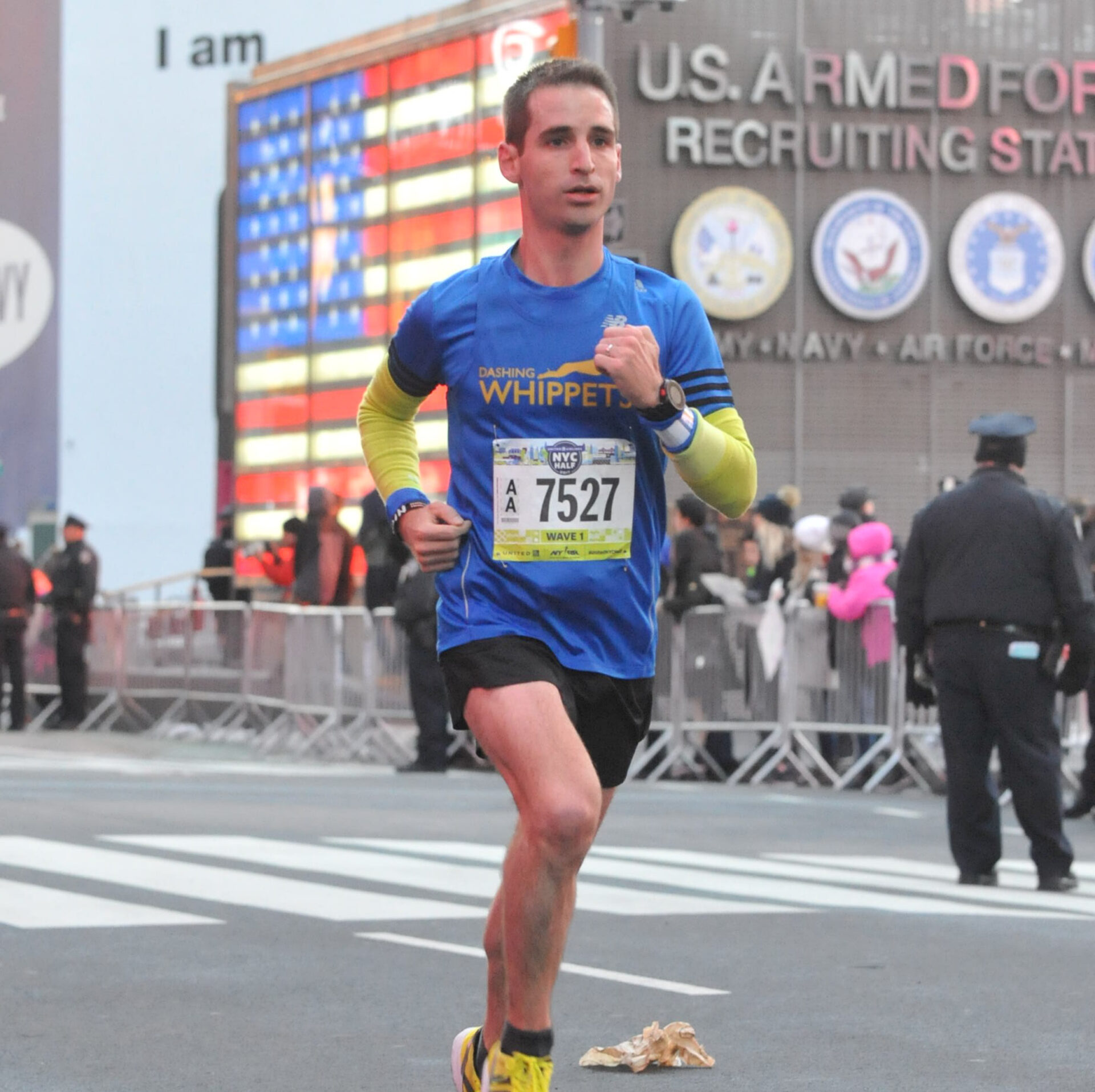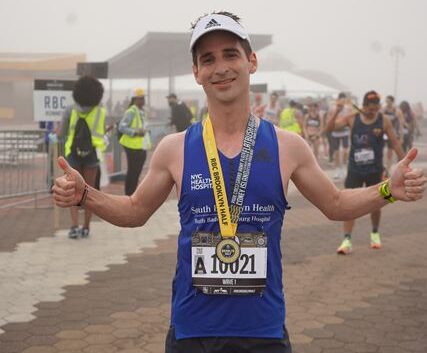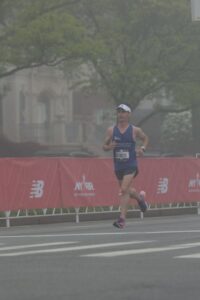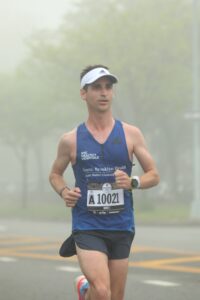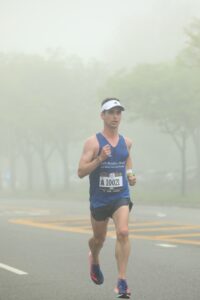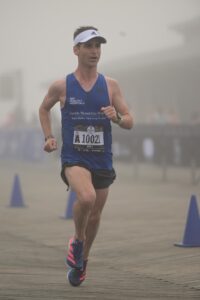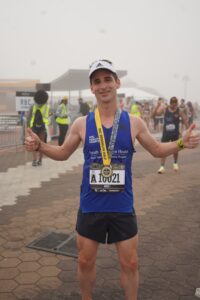When scheduling races this year, I initially did not plan on running the Brooklyn Half. Sure, the start line is close to my house. Prospect Park is also my primary training ground. My focus, though, is racing a fast 5k before working on the marathon next year. I initially achieved my New York City Marathon time qualifier by running the very chilly Fred Lebow Half in January. To my surprise, I also achieved a guaranteed entry to run Brooklyn with my result. This run would also serve a purpose of hyping up Coney Island’s local hospital rebranding. I put their logo on my singlet.
In retrospect, I’m happy with deciding to include the race in my calendar. Redemption, perhaps since my 2019 experience running it wasn’t as great—an off-year for me. But also, it foreshadows what I might achieve next year in the marathon.
For my shakeout the day before, I woke up super early to run since this race starts at 7 am. I thought waking up early would prep my body to run early. To my surprise, it worked! I woke up right before 4 am to eat and take care of business. I arrived in plenty of time to check a bag and warmup properly.
A less than ideal forecast did not deter me from trying my best. After all, I run much better in the heat than I do in the cold. Granted, runners in wave 1 had a better deal, as the sun didn’t break out until after 8:30. The main task dealt with managing the course and the weather conditions well. That’s why I started in the back of the 6:06 pace group (1:20 finish). See, the race is big enough that knowingly, I could latch onto different groups to negative split the course. At the start, I found my rhythm and slowly started to increase the pace.
I knew when I wanted to cross for the 3rd, 5th and 10th mile. I solely used my Garmin watch with the auto lap feature turned off. I refused to push the pace until after leaving Prospect Park. I would occasionally dump water on my head at the water stations and slow just enough to take Gatorade. I recommend sometimes slowing down to take fluids. Time isn’t really lost and it helps with powering through the later stages of the race.
The open road on Ocean Parkway made it easy to straight shot through running 5:50 mile pace. Moreover, my form felt controlled throughout the whole race. The two years I spent studying biomechanics helped, as I could give myself subtle cues throughout the race to run strong. I loved that I saw my family and could high five my son at mile 12 while not breaking form. I had enough in the tank to finish and sprint the last 200 meters to the finish.
I did not specifically train for this race. At the start of the week, I ran 4 miles at 5:57 pace. I ended up averaging this pace for the whole 13.1 miles to finish in 1:17:50.
I’m happy with my performance. Now, time to focus on the 5k.
